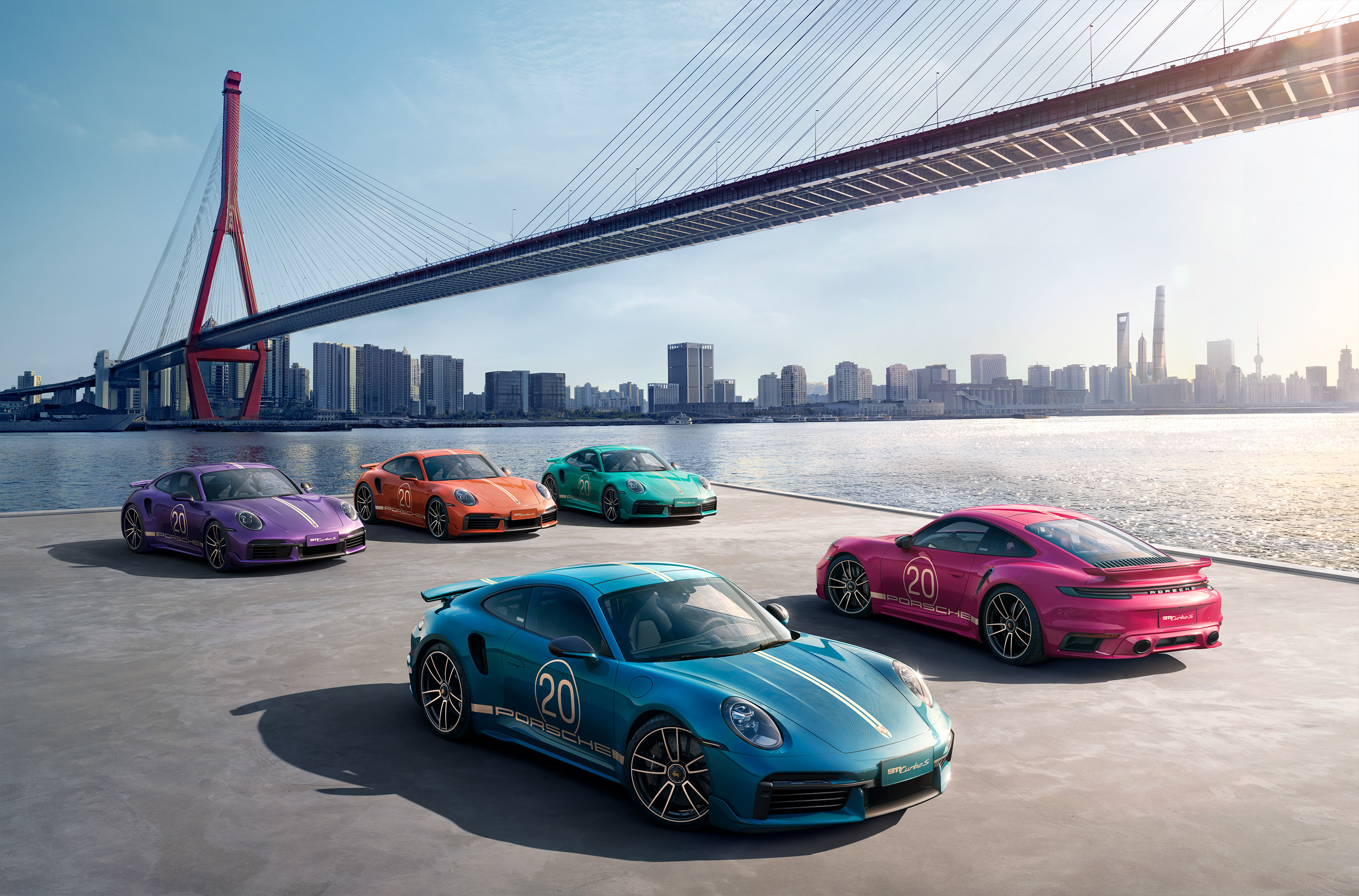BMW, Porsche, And The Shifting Sands Of The Chinese Automotive Market

Table of Contents
China's automotive market is a behemoth, representing a significant portion of global vehicle sales. However, it's a market in constant flux, presenting both immense opportunities and formidable challenges for established luxury brands like BMW and Porsche. This article will examine the evolving landscape of the Chinese automotive market and analyze how these German giants are adapting—or failing to adapt—to its dynamic shifts. We'll delve into the rise of domestic Chinese brands, the strategies employed by BMW and Porsche, and the broader challenges and opportunities present in this crucial market.
H2: The Rise of Chinese Domestic Brands
The Chinese automotive market is no longer solely dominated by international players. Domestic brands are rapidly gaining market share, fueled by technological innovation and savvy marketing.
H3: Increased Competition from Local Players:
Chinese automakers like BYD, Nio, and Xpeng are making significant strides, challenging established players with their technologically advanced and competitively priced electric vehicles (EVs).
- BYD's success: BYD, with its Blade Battery technology and diverse range of EVs and plug-in hybrids, has become a major force, capturing significant market share.
- Nio's innovative approach: Nio's battery-as-a-service model and focus on premium EVs has resonated with affluent Chinese consumers.
- Xpeng's advanced driver-assistance systems: Xpeng's focus on advanced driver-assistance systems (ADAS) and autonomous driving capabilities positions it as a strong contender in the EV market.
- Other emerging players: A host of other domestic brands, including Li Auto and WM Motor, are contributing to the intense competition.
These Chinese automakers are leveraging their understanding of local consumer preferences and are rapidly improving the quality and technology of their vehicles. This intense competition is forcing established brands to re-evaluate their strategies.
H3: Shifting Consumer Preferences:
Chinese consumer preferences are evolving rapidly. The focus is shifting towards technological features, a strong brand image aligned with modern values, and environmentally friendly vehicles.
- Demand for technological features: Chinese consumers show a strong preference for advanced driver-assistance systems (ADAS), connectivity features, and other high-tech innovations.
- Brand image and social responsibility: Brand image and perceived social responsibility are increasingly important factors influencing purchase decisions. Consumers favor brands that align with their values and aspirations.
- Growing environmental consciousness: Environmental concerns are playing a bigger role, driving the demand for electric and hybrid vehicles.
This changing landscape necessitates a nuanced understanding of the Chinese consumer to succeed in this competitive market.
H2: BMW and Porsche's Strategies in China
BMW and Porsche have adopted different, yet equally important strategies to navigate the challenges and capitalize on the opportunities in the Chinese automotive market.
H3: BMW's Approach:
BMW has implemented a multi-pronged strategy focused on localization, product diversification, and targeted marketing.
- Localization efforts: BMW has invested heavily in local manufacturing and supply chains to reduce costs and cater to local preferences.
- Product diversification: BMW is expanding its range of electric vehicles (EVs) and SUVs, aligning with the growing demand in the Chinese market. The iX and i4 models are prime examples of this push.
- Targeted marketing campaigns: BMW engages in sophisticated marketing campaigns designed to resonate with Chinese consumers, highlighting its technological advancements and brand prestige.
H3: Porsche's Approach:
Porsche, while maintaining its focus on the luxury segment, is adapting to the changing environment.
- Maintaining luxury positioning: Porsche continues to emphasize its heritage and luxury brand image, targeting affluent Chinese consumers.
- Focus on SUVs: Porsche has capitalized on the growing demand for SUVs with its Cayenne and Macan models.
- Electrification strategy: The introduction of the Taycan, a fully electric sports car, signals Porsche's commitment to electrification and catering to environmentally conscious buyers.
- Targeted marketing: Porsche uses sophisticated marketing campaigns targeted at affluent individuals who value performance, luxury, and exclusivity.
H2: Challenges and Opportunities in the Chinese Market
Despite the opportunities, navigating the Chinese automotive market presents significant challenges for international brands like BMW and Porsche.
H3: Navigating Regulatory Hurdles:
The regulatory environment in China is constantly evolving, creating challenges for foreign automakers.
- Import tariffs: Import tariffs and other trade barriers can impact profitability.
- Emission standards: Stricter emission standards necessitate significant investments in developing and producing cleaner vehicles.
- Data privacy regulations: Data localization requirements and privacy regulations pose challenges for managing data and ensuring compliance.
H3: Future Outlook and Growth Potential:
Despite the challenges, the long-term outlook for the Chinese automotive market remains positive.
- Continued market growth: The Chinese automotive market is expected to continue growing, albeit at a slower pace than in previous years.
- Technological advancements: Future technological advancements in autonomous driving and other areas present significant opportunities.
- Geopolitical risks: Geopolitical factors and potential trade tensions could create uncertainties.
The Chinese automotive market will continue to be a battleground for innovation and competition, offering significant opportunities for those who can successfully adapt.
Conclusion: The Future of BMW, Porsche, and the Chinese Automotive Market
The Chinese automotive market is undergoing a rapid transformation, with the rise of domestic brands challenging established international players. BMW and Porsche are employing distinct strategies to navigate this dynamic landscape, focusing on localization, product diversification, and targeted marketing. While regulatory hurdles and geopolitical uncertainties exist, the long-term growth potential of the Chinese automotive market remains significant. The success of BMW and Porsche will depend on their continued ability to adapt to the ever-changing demands of Chinese consumers and the regulatory environment. Stay informed on the dynamic Chinese automotive market and the strategies of BMW and Porsche by subscribing to our newsletter for the latest updates and analysis.

Featured Posts
-
 Capital Summertime Ball 2025 Tickets How To Buy And What To Expect
Apr 29, 2025
Capital Summertime Ball 2025 Tickets How To Buy And What To Expect
Apr 29, 2025 -
 Reliance Industries Earnings Beat Expectations Impact On Indian Equities
Apr 29, 2025
Reliance Industries Earnings Beat Expectations Impact On Indian Equities
Apr 29, 2025 -
 Fyrsta Rafmagnsutgafa Porsche Macan Yfirlit Yfir Helstu Eiginleika
Apr 29, 2025
Fyrsta Rafmagnsutgafa Porsche Macan Yfirlit Yfir Helstu Eiginleika
Apr 29, 2025 -
 Ambanis Reliance Strong Earnings Signal For Indian Market
Apr 29, 2025
Ambanis Reliance Strong Earnings Signal For Indian Market
Apr 29, 2025 -
 Willie Nelsons Spouse Denies Inaccurate Media Claims
Apr 29, 2025
Willie Nelsons Spouse Denies Inaccurate Media Claims
Apr 29, 2025
